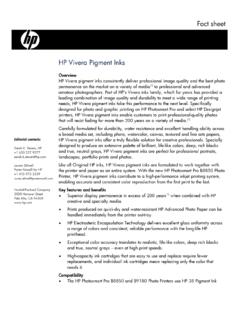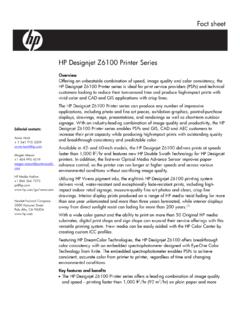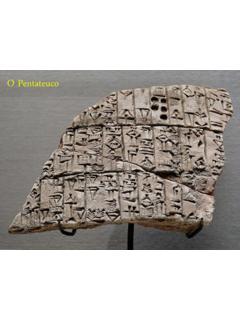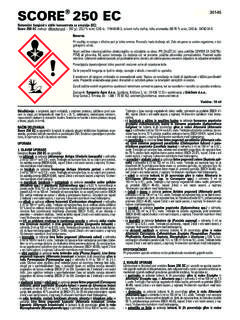Transcription of 2043-300InkjetTips-02 9/7/07 5:43 PM Page 18 …
1 Andrew Darlow, All Rights ReservedPhotographer: Andrew Darlow;Image title: Barcelona 003; Print Size: 60 40 inches; Media: HP Artist Matte Canvas;Printer Name: HP Designjet Z3100; Ink Used: HP Vivera; Driver: Standard HP Driver (Windows XP); Camera: SonyCyberShot DSC-F828; Lens: Built-in Carl Zeiss 28-200mm; F-stop: f/5; Exposure: 1/5 9/7/07 5:43 PM Page 18 File Preparation: An OverviewChapter 22043-300 InkjetTips-02 9/7/07 5:43 PM Page 19 Andrew Darlow, All Rights Reserved2043-300 InkjetTips-02 9/7/07 5:44 PM Page 20 Transforming Your Imagesfrom Pixels to PrintsTo achieve great prints from your files, you can wait for the planets to align, andsay a few of your favorite magic words. Or, you can prepare your files in a logi-cal way using a structured workflow. Whether you are printing scanned nega-tives, transparencies, drawings, digitally captured paintings, scanned 3D objects, ordigital photographs, these tips should help make the process faster and not exactly a step-by-step tutorial, the tips in this chapter are presented inthe order I usually approach my printing projects.
2 Throughout the book, more tips forpreparing files will be covered the more you know about optimizing your images,the better your prints will Preparation: An Overview File Preparation: An Overview File Preparation: An Overview File PreparatPhotographer: Andrew Darlow;Image title:NYC 002; Print Size: 17 22 inches; Paper: Hahnem hle FineArt Pearl;Printer Name: Canon imagePROGRAF iPF5000; Ink Used:Canon LUCIA; Driver: Canon PrintPlug-in for Photoshop (Mac OSX); Camera: Canon EOS-D60; Lens: Canon EF16-35mm ; F-stop: f/19;Exposure: 1 sec. To find the web links noted in the book ( , etc.), visit 18 Find appropriate imaging books and look for goodmagazine and web of how your work originates (from a film scan, digital photograph, ordirect scan with a digital camera), you can benefit from reading books, magazinesand online resources that cover various imaging topics.
3 A list of recommendedbooks, magazines and web sites are available at , with many specificsuggestions for photographers and other artists ( ).TIP 19 Learn the difference between DPI and , photographers and others who work with digital files often misunderstandthe difference between the terms DPI and PPI. DPI, or dots per inch, is used todefine a printer s resolution (for example, many inkjet printers can print a certainnumber of dots per inch, and this can be specified in the printer software as a num-ber, such as 360 DPI, 720 DPI, 1440 DPI, etc). PPI, or pixels per inch, represents adigital image s resolution on a monitor or in a digital file (the number of pixels acrossa distance of one inch, such as 200 PPI, 300 PPI, etc.).2043-300 InkjetTips-02 9/7/07 5:44 PM Page 21 Andrew Darlow, All Rights Reserved2043-300 InkjetTips-02 9/7/07 5:44 PM Page 22 TIP 20 Learn about resolution and file too often, resolution is perceived as being complicated, but it doesn t have tobe.
4 One of the best ways to help grasp resolution is through a simple illustration. A common file might be 8 by 10 inches at 300 PPI. This translates to 2400 pixels (8 300 pixels) by 3000 pixels (10 300 pixels), or 7,200,000 pixels total (very similarto the files that a 7-megapixel camera produces). Unless we know that the file is 8 by10 inches, we would not know how many pixels per inch it is. The same 2400 3000pixel file could also be represented as 4 5 inches at 600 PPI, or 2 inches at1200 Preparation: An Overview File Preparation: An Overview File Preparation: An Overview File PreparatPhotographer: Andrew Darlow;Image 002; Print Size: 13 19 inches; Paper: Ilford GalerieClassic Smooth Pearl;Printer Name: Epson Stylus Photo R2400; Ink Used:Epson UltraChrome K3;Driver: Standard Epson Driver (OSX); Camera: Canon EOS-D60; Lens: Canon EF16-35mm ; F-stop: ; Exposure: 3 sec.
5 TIP 21 Choose an appropriate resolution for your optimum quality, there are some rules of thumb with regard to what PPI youneed at final print size for high quality prints from bitmapped images such as scansand digital photos. Setting your image to exactly 180 PPI, 240 PPI, or 360 PPI at itsfinal output size can result in better print quality because of the way in which thosePPI numbers are handled by some print drivers and RIPs when files are printed at100%. RIPs (Raster Image Processors) are described in greater detail in Chapter 5, Black and White and RIPs. These three illustrations show how three different files, each with the same exact number of pixels(2400 3000) can have very different dimensions because of their different resolutions (PPI). Andrew Darlow2043-300 InkjetTips-02 9/7/07 5:44 PM Page 2324 Overview File Preparation: An Overview File Preparation: An Overview File Preparation: An Overview In most cases, you will see no difference in print quality if your resolution is some-where between the suggested numbers (for example, 268 PPI).
6 This is importantbecause it is much more convenient to have just one version of a file to make varioussized prints. If every file had to be resized to exactly 180 PPI, 240 PPI, or 360 PPI atits final print size, it would create the need for additional files. For smaller prints(under 8 10 inches) use higher resolutions (about 300 PPI) at the final print making large prints (over 30 40 inches) you can usually get very high qualityresults with lower resolutions (even as low as 100 150 PPI at the final print size). I rec-ommend doing your own tests to determine if you can see differences in print qualityat various 22 See how file sizes change as PPI increases inThe Resolution visual representation of resolution can be seen in the following chart. Thechart shows approximate file sizes for RGB uncompressed TIFF files based on theirdimensions (along the left side) and their resolution in pixels per inch (across thetop).
7 Uncompressed files, as opposed to compressed files, such as JPEG, do notdegrade in quality when saved because no image data is discarded to compress thefile. A very large file (for example, 16 20 inches at 300 PPI) when opened in a pro-gram like Photoshop might actually be very small (when measured in megabytes) if itwas saved as a JPEG (especially if saved as a low- or medium-quality JPEG). This resolution chart helps to determine appropriate file sizes for digital printing. Andrew Darlow2043-300 InkjetTips-02 9/7/07 5:44 PM Page 2425 File Preparation: An Overview File Preparation: An Overview File Preparation: An Overview File PreparatTo use the chart, just choose a print size, then select a resolution to determine the filesize. For example, choose 11 14 inches and 200 pixels per inch. In the box wherethey meet ( MB) is the file size.
8 The chart is especially helpful for determininghow large a file should be scanned or prepped to make a specific size print. As youcan see in the highlighted area of the chart, when you double the PPI and keep thesame dimensions (for example, 11 14 at 400 PPI), the file size quadruples ( MB).TIP 23 Use Photoshop as a Resolution like The Resolution Chart (but much more precise and flexible), AdobePhotoshop s File>New dialog box and Image>Image Size dialog box are excellenttools for examining different print sizes and for determining what sizes the files willbecome when resolution or image dimensions change. Also note that the ColorMode (for example, RGB or Grayscale) and 8-bit versus 16-bit, seen below the width,height, and resolution boxes, will affect the file size. An RGB file will be three timesthe size of a grayscale image with the same width, height, and resolution and a 16-bit file will be twice the size of an 8-bit file.
9 (Left) The File>New dialog box in Photoshop being used as a resolution calculator. Notice how the Image Size on theright changes depending upon what numbers are inserted into the width, height, and resolution boxes. (Right) TheImage>Image Size dialog box can also serve as a resolution 24 Set your file size to its print most cases, I recommend sizing your images to 100% of their print size to mini-mize the chance of making an error when printing an initial print, or when reprintingan image for an edition. However, if you are making extremely large prints, orimporting your image files into a RIP or page layout program, there may be a goodreason to keep the files at a smaller size, such as 50% of the print size. Images canthen be output at 200% or any other zoom 9/7/07 5:44 PM Page 25 Andrew Darlow, All Rights Reserved2043-300 InkjetTips-02 9/7/07 5:44 PM Page 2627 File Preparation: An Overview File Preparation: An Overview File Preparation: An Overview File PreparatPhotographer: Andrew Darlow;Image 003; Print Size: 13 19 inches; Paper: Oriental GraphicaRC Professional Luster;Printer Name: Epson Stylus Photo R2400; Ink Used:Epson UltraChrome K3;Driver: Standard Epson Driver (OSX); Camera: Canon EOS-D60; Lens: Canon EF16-35mm ; F-stop.
10 Exposure: 3 25 Calibrate and profile your monitor and printer,and print a standard calibration tips are covered in greater detail in Chapter 4, Color Management and DriverTips, but it is important to note them here because it is at this stage that you wantto make sure your monitor and printer are in a calibrated and profiled state to beginthe testing process. A standard calibration image, such as the very popularPhotoDisc target, or the custom-made smaller target I created are available fordownload ( )to help you judge the quality of your screen and test 26 Print a test at multiple resolutions and withdifferent every printer model is different, you can find just the right settings by run-ning a few tests. First, output a test print of a small image, or a small section of animage, at different printer resolutions, such as 720 DPI, 1440 DPI, etc. Then print thesame cropped section from an image at different resolutions, such as 180 PPI, 240 PPI, etc.







